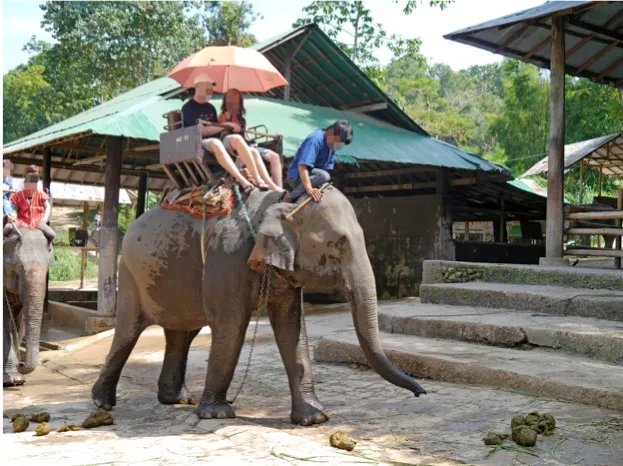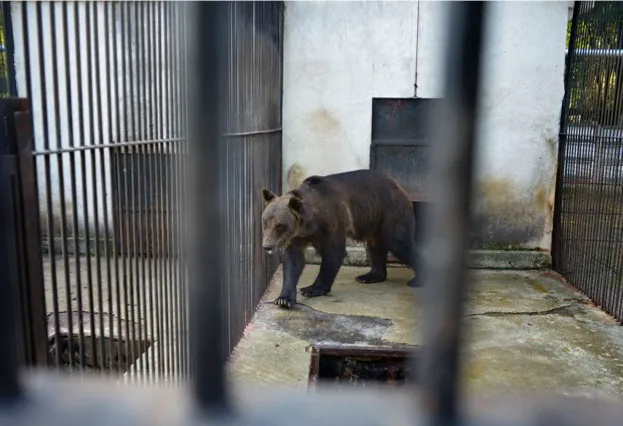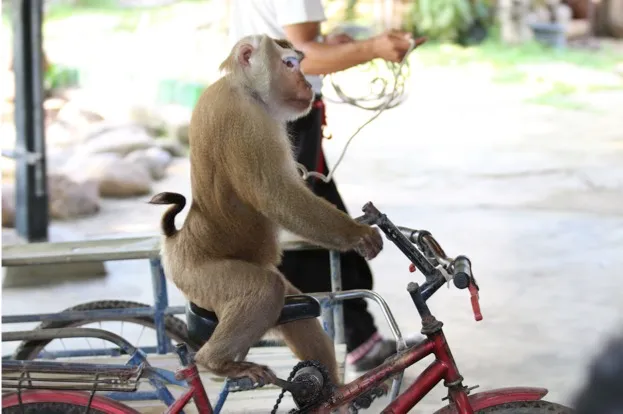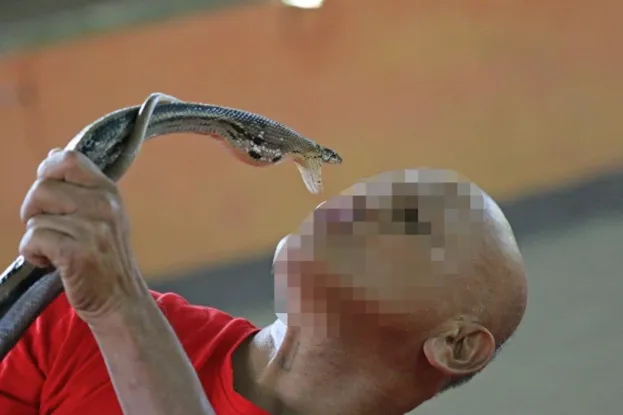Three out of four wildlife tourist attractions involve “some form of abuse or raise conservation concerns”, according to a new study written by experts from Oxford University’s Wildlife Conservation Research Unit (WildCRU) and commissioned by World Animal Protection.
World Animal Protection says that at least 550,000 wild animals suffer “at the hands of irresponsible tourist attractions” and that an estimated 110 million people visit these places every year.
WildCRU’s study included an analysis of reports left on TripAdvisor by tourists – of 50,000 people who visited a wildlife attraction, 80 per cent left positive reviews for venues with poor animal welfare.
“We need to stop the demand for elephant rides and shows, hugs and selfies with tigers and lions by exposing the hidden suffering behind wildlife attractions,” said Kate Nustedt, World Animal Protection’s director of wildlife.
“If you can ride it, hug it or have a selfie with a wild animal, then you can be sure it is cruel. Vote with your feet and don’t go.”
World Animal Protection used WildCRU ratings and its own research to compile a list of the 10 cruellest wildlife entertainment attractions or activities across the world.
1 Riding elephants
Elephants are taken from their mothers when they are babies and put through a training process that involves inflicting severe pain with pointed metal ‘bull hooks’ or wooden battens and either restraining them in small cages or restricting their movement with ropes or chains. Once ‘broken’, they are prevented from forming natural social relationships with other elephants. Thailand is the global hotspot for elephant rides, but it has also emerged in South Africa in the past 10 years.

'Training' may result in permanent psychological harm to the elephants involved. ©World Animal Protection
2 Tiger selfies
Tiger cubs are separated from their mothers at an early age, and then “handled or hugged” by tourists. In Thailand, World Animal Protection found 10 venues housing 614 tigers, and similar attractions are also found other parts of Asia, Australia, Mexico and Argentina.
3 Walking with lions
Once captive lion cubs have grown too large for tourists to pick them and pose for photos with them, they are exploited for the relatively new ‘walking with lions’ experience. This type of attraction is mainly found in South Africa.
4 Bear parks
Bears are kept in sterile cages or ‘pits’ which are frequently overcrowded (bears are naturally solitary animals). In some parks, bears are forced to dress as clowns or perform circus tricks. The stress associated with these venues can increase the susceptibility of the captive bears to bacterial infections.

Many bear parks keep their animals in bare, sterile cages. © World Animal Protection
5 Holding sea turtles
When handled, sea turtles panic and intensively flap their flippers. Tourists have been known to drop struggling turtles, causing significant injuries such as broken shells, which will probably kill them.
6 Performing dolphins
Captive dolphins spend their lives in spaces not much bigger than swimming pools and in water that is often treated with chlorine, which can cause skin and eye irritations. They can suffer from sunburn and stress-related illnesses, heart attacks and gastric ulcers. Though some are bred in captivity, dolphins are still being taken from the wild to stock dolphinaria.
7 Dancing monkeys
Macaques in Thailand are trained to make them behave and appear more human. They are forced to dance and perform tricks for humans, and when not front of a crowd, they are kept chained in small cages or outside on short chains.

Macaques are trained to ride bicycles and do other 'human' activities. © World Animal Protection
8 Touring civet coffee plantations
‘Civet’ coffee – made from the coffee ‘cherries’ (fruits) that civets eat and then excrete in pellets – has become a high value product all over the world. Civet coffee farmers have started taking civets into captivity in order to up their yields, resulting in disease, poor nutrition and some animals showing signs of stress and self-mutilation. In Indonesia, tourists can visit these facilities to see the caged civets and sample the coffee, increasing the number being taken from the wild.
9 Snake charming
‘Kissing cobras’ is the latest ‘twist’ on the ancient street entertainment activity of snake charming. The cobras involved are frequently taken from the wild and then have their fangs taken out and their venom ducts blocked or removed, often resulting in infections which can kill them.

Cobras will probably have their fangs removed before anyone attempts to do this. © World Animal Protection
10 Crocodile farming
Crocodiles have been farmed to supply their skins to the fashion industry and meat to the restaurant trade for many years, but now tourists can visit these facilities and then sit down for a meal afterwards. Conditions in these farms can kill the crocodiles, with septicaemia a particularly common problem. In the limited space available, fights between the crocs are common, resulting in serious injuries and death.
Find out more about World Animal Protection
The Wildlife Conservation Research Unit (WildCRU) does ground-breaking scientific research all over the world
